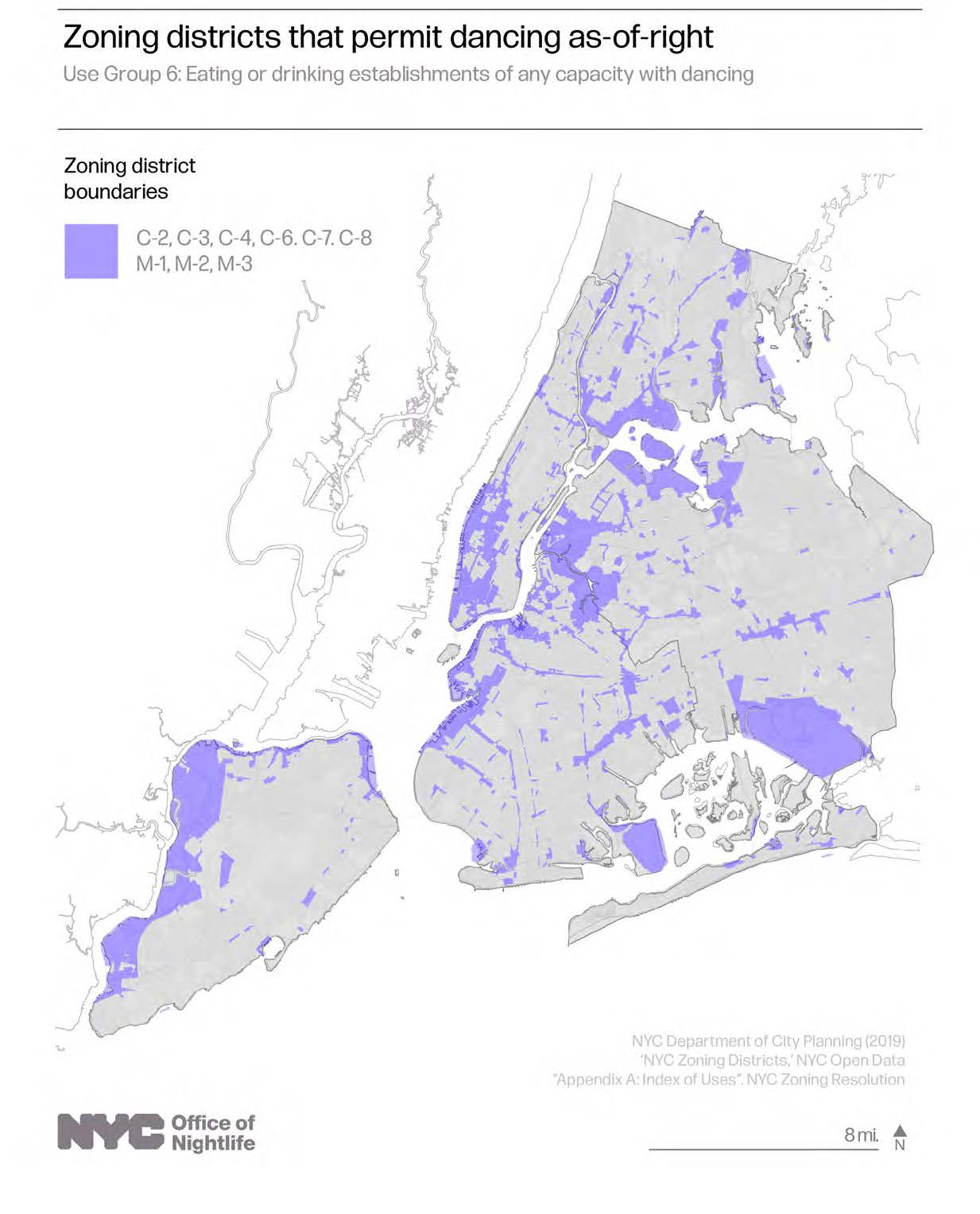The complete 160 page report may be downloaded at this link and is described at this ONL page.
Comments: Excerpts relating to dancing and music are below. The Report, issued 3.5 years after the establishment of ONL and the repeal of the Cabaret Law, avoids specific recommendations at to changes to the zoning resolution. No details are provided as to regulations by the Department of Buildings. The Map showing purported Use Group 6 areas of the City, is actually a map of Use Group 12.
Excerpt from Page 24 of ONL Report.
44 .Explore changes to zoning language to support and expand live music and social dancing uses. Explore changes to the Zoning Resolution and Building Code language to improve consistency in enforcement for venues that host live music and social dancing
Excerpt from Page 32 of ONL Report:
Reform zoning regulations & operating restrictions
• Revise zoning to remove prohibitions on patron dancing
• Promote nightlife within areas where establishments can operate without disturbing neighboring residents
• Establish guidelines to reduce stipulations that reduce business operating hours
Excerpt from Page 134 of ONL Report:
DESCRIPTION
Explore changes to the Zoning Resolution and Building Code language to improve consistency in enforcement for venues that host live music and social dancing
EXPLORE CHANGES TO ZONING LANGUAGE TO SUPPORT AND EXPAND LIVE MUSIC AND SOCIAL DANCING USES
4.4
In 1926, Prohibition-era New York City introduced its Cabaret Law that banned nightlife establishments from hosting “musical entertainment, singing, dancing, and other forms of amusement,” without a formal license. The law was widely perceived as having a disproportionate effect on marginalized groups, who were liable to be targeted for enforcement. In 2017, the City Council repealed the provisions of the law that required venues to obtain a Cabaret License. (As of 2016, the Department of Consumer Affairs reported that just 118 of 25,100 eligible establishments had obtained such a license, though social dancing is common in many more spaces.)
However, changes to the Cabaret Law did not loosen all restrictions on live music or social dancing. Social dancing is permitted in select zoning districts only. Venues that want to host patron dancing must register their business’ “method of operation” as a dance venue through the SLA. Inconsistencies between the New York City Building Code and the Zoning Resolution cause confusion, as the Building Code describes “cabarets,” while the Zoning Resolution refers to, “clubs” and “eating and drinking establishments.”
ONL recommends working with city agencies and the City Council to explore changes to language that regulates live music venues and nightclubs, including exploring allowances for “music events” and “patron dancing,” among other potential changes. Such reforms would help improve consistency for business operators in permitting, licensing, and inspections, and clarify what types of uses and activities are allowable in nightlife spaces.
Zoning districts that permit dancing as-of-right – MAP.
These zoning districts permit Use Group 12, the use type that allows for “eating or drinking establishments with entertainment and a capacity of more than 200 persons, or establishments of any capacity with dancing.

Comment: The caption to this map is not appropriate. The map shows Use Group 12 and not Use Group 6. Even were this to be corrected, the caption would be misleading, in that it implies that other Use Groups might allow dancing. As a generalization, except for special districts and hotels, dancing is only permitted in Use Group 12.
Zoning Code limits live music and dancing venues to all manufacturing and select commercial districts. p. 102

